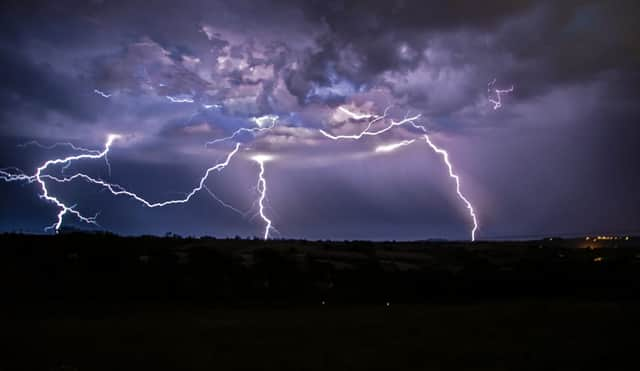This is how storm names are chosen - and the full list for 2021


Storm Christoph recently wreaked havoc across the UK, and the country is experiencing adverse weather once again with the arrival of Storm Darcy.
Some places in England and Scotland are braced for more snow along with strong winds and freezing temperatures hitting as little as -10C.
Advertisement
Hide AdAdvertisement
Hide AdThe Met Office has issued yellow warnings for snow and ice until Friday, with the cold conditions expected to cause travel disruption.
The freezing weather has caused many people to wonder who named Storm Darcy, and how names for storms are chosen.
Here’s everything you need to know - including what other storms will be called in 2021.
Who named Storm Darcy?
In the UK, the Met Office is responsible for naming storms.
Advertisement
Hide AdAdvertisement
Hide AdWhen the newest storm hit the country, the forecaster announced on Sunday 7 February that it had been given the name of Darcy.
The Met Office, its Irish counterpart Met Éireann, and the Dutch weather forecasting service KNMI choose storm names by asking members of the public to send in suggestions.
This year, they received thousands of submissions via social media and email.
The first public naming campaign was in 2015, called Name Our Storms, which prompted more than 10,000 suggestions from people eager to make their mark on the UK’s weather system.
How are the names chosen?
Advertisement
Hide AdAdvertisement
Hide AdOnce names have been submitted by the public, they are whittled down by the forecasters who choose some of the more popular names and ones that reflect the diversity of Britain, Ireland and the Netherlands.
A list is made of the most popular entries, with one name beginning with each letter of the alphabet and alternating between male and female names.
Once the final list is agreed upon, storms are named in alphabetical order.
That’s why, in the 2020 to 2021 season, we’ve so far experienced storms Alex, Barbara, Aiden, Bella, Christoph and now Darcy.
Advertisement
Hide AdAdvertisement
Hide AdIf a storm arrives on UK shores from the US - where they are also named - the Met Office continues to use the name assigned to it by America’s national weather service, to avoid confusion.
They also reject any names of previously destructive storms across the globe, such as Maria, the Puerto Rican storm which killed over 3,000 people in 2017.
Names that are not “proper names” will also be rejected - ones like Apocalypse, Baldrick, Big Boss, Bluetooth, Forkbeard and Gnasher have never made the cut.
Many Scots will also vividly remember 2011’s “Hurricane Bawbag”.
Advertisement
Hide AdAdvertisement
Hide AdUnsurprisingly, this was not a Met Office storm name since the UK only adopted the practice in 2014.
The storm was actually named Cyclone Friedhelm by the Free University of Berlin, but the Scottish alternative, needless to say, was the one that gained the most attention on social media.
Why do storms have names?
The US has been naming its storms since the 1950s, with the UK only following suit seven years ago.
It’s only the storms that are large enough to cause significant damage that are given names.
Advertisement
Hide AdAdvertisement
Hide AdWhen a storm is deemed to have the potential to cause amber or red weather warnings, it will be named at that point.
Storms are named to raise public awareness and draw attention to their potential dangers, as well as making it easier for people to follow the weather’s progress in the media or on social media using a hashtag.
It is hoped that giving a storm a name like Darcy will prompt people to take cautionary action to keep themselves safe.
The Met Office states: “The naming of storms using a single authoritative system should aid the communication of approaching severe weather through media partners and other government agencies. In this way the public will be better placed to keep themselves, their property and businesses safe.”
What will the rest of 2021’s storms be called?
Advertisement
Hide AdAdvertisement
Hide AdThe Met Office issues a new list of storm names each September, which runs until late August the following year.
That’s why some of the names on the 2021 list have already been used - but there’s still a long list of names after Darcy.
The names for the 2020/2021 storm season are:
Evert, Fleur, Gavin, Heulwen, Iain, Julia, Klaas, Lilah, Minne, Naia, Oscar, Phoebe, Ravi, Saidhbhín, Tobias, Veronica and Wilson.
The Met Office doesn’t include names for Q, U, X, Y and Z because finding names beginning with them is too difficult, and to keep in line with the US National Hurricane Centre naming conventions.